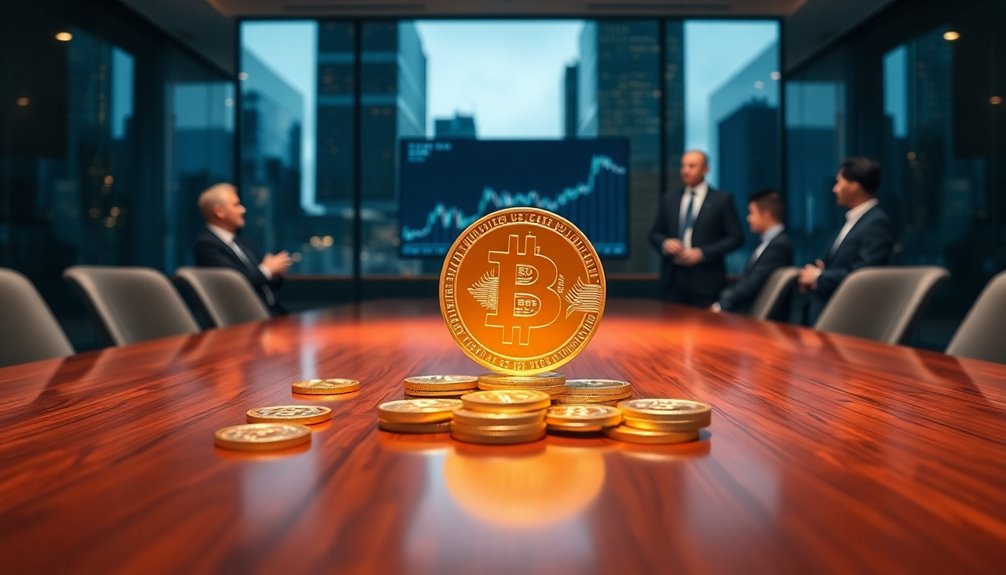You've likely noticed a shift in corporate finance strategies lately. More firms are opting to hold Bitcoin in their treasuries instead of traditional cash reserves, aiming to boost their share prices. This trend mirrors the growing perception of Bitcoin as a legitimate asset class. But what does this mean for the future of corporate finance and investment? The implications could be significant as this model gains traction among businesses.

As companies increasingly seek innovative ways to safeguard their assets, MicroStrategy stands out for its bold decision to make Bitcoin its primary treasury reserve asset. By being the first publicly traded company to adopt this strategy, MicroStrategy not only set a precedent but also significantly increased its market visibility. This pioneering move has helped the company cultivate a strong, innovative corporate image that resonates with investors and the broader market.
Bitcoin's appeal as a treasury asset lies in its unique properties. You might view it as a modern equivalent to "digital gold," providing a hedge against inflation due to its finite supply. Many companies recognize the potential for capital appreciation, which could lead to substantial benefits for shareholder wealth. Additionally, open-source documents provided by MicroStrategy offer valuable insights for firms looking to navigate corporate bitcoin strategies. Furthermore, implementing risk management strategies can help firms protect their investments from market volatility.
However, it's important to acknowledge the challenges that come with this strategy. The volatility of Bitcoin can create significant risks, complicating financial reporting and potentially shaking investor confidence.
MicroStrategy's approach has attracted attention from other firms, with notable adopters like Tesla and Marathon Digital Holdings following suit. This trend isn't limited to one industry; companies across tech, mining, and finance are exploring Bitcoin for their treasury strategies. The global momentum continues to build, with multiple companies announcing Bitcoin purchases daily, highlighting a shift in how businesses view digital assets.
However, this strategy isn't without its hurdles. Companies must effectively manage the financial risks tied to Bitcoin's price swings and ensure that their holdings align with operational needs. Regulatory compliance is another crucial consideration, as the evolving landscape surrounding Bitcoin can pose challenges for firms.
You'd need to think strategically about how Bitcoin treasuries fit into your overall goals and risk tolerance.
MicroStrategy's model has proven effective, leading to significant growth in its market capitalization and placing it among the top 100 U.S. companies. As more companies look to adopt similar strategies, they can benefit from MicroStrategy's open-source documentation, which provides insights into navigating a corporate Bitcoin strategy.
The interest in Bitcoin treasuries isn't just a fleeting trend; it represents a fundamental shift in how companies view their reserves. In this evolving landscape, Bitcoin could become a cornerstone for future corporate finance strategies, driving both innovation and value for shareholders.









